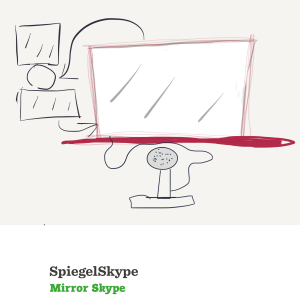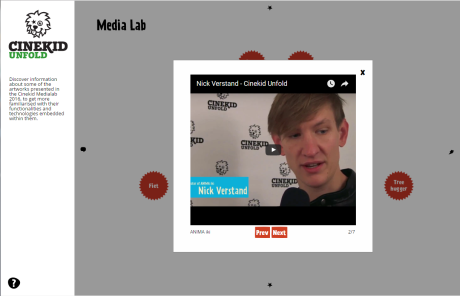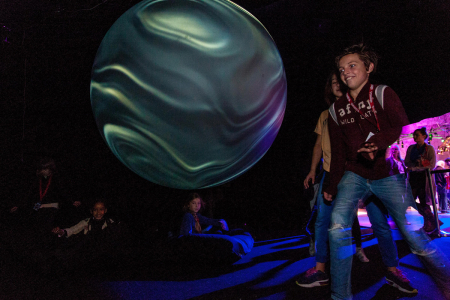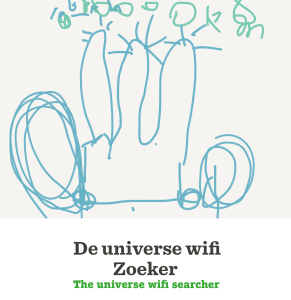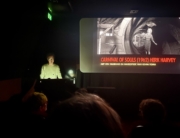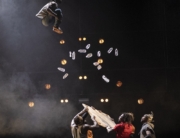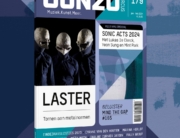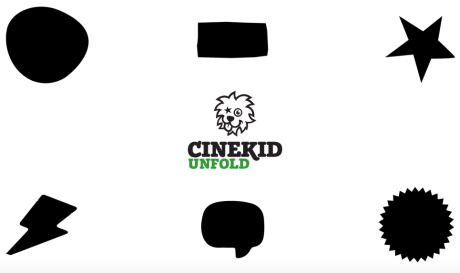
Can a critic become a developer?
Hybridisation in the (digital) publishing work flow
door: Fabiola Fortuna
Can a critic, or a humanist, become a developer? This question was brought to me some weeks ago by Sonja van der Valk (Domein voor Kunstkritiek). My reply? Yes, surely. The necessary condition to do this – next to passion, of course – is having an open mind, not separating disciplines that at first glance might look different but can be of interest to each other, and adopting a method which merges humanistic mind sets with web developing skills. Discovering this universe not too long ago, to me it is the only way to proceed with projects that involve both humanistic material and digital tools. Digital humanities taught me that humanistic knowledge and digital technologies are not incompatible, separate or inconsistent to one another – better yet the combination of these two can generate something quite innovative, effective and meaningful for both fields.
My opinion is that our team of interns at Publishing Lab office – one of them me – is proof of this: we learnt this lesson well and applied it to Cinekid Unfold platform (made for Cinekid Festival, a Dutch film festival in its thirtieth year) [s1] which could not be as it is now without just this combination of a humanistic and designers approach, powered by coding skills.
Go hybrid
The project called Cinekid Unfold was born, developed and realised by a couple of interns at PublishingLab, a laboratory with a ‘hybrid’ attitude based in the Hogeschool van Amsterdam, where people conduct amazing experiments with the medium of publishing. The challenge we have faced during the creative process of this project is to portray the sense of atmosphere and creative thoughts of the artists and the public’s experience at Cinekid Festival. This being an offline event, we wanted to bring it to an online platform. With this idea in mind we began to develop the website, starting out with our diverse educations and skill sets, trying to combine these and make them work together in the best way possible.
Our team was composed of four people with different backgrounds: Latika Meelu, a journalism student who loves writing and who maintained contact with the professionals, artists, authors as well as other figures while we worked on developing the website; Janne van Hooff, a graphic design student who knows digital design tools inside out but is also fascinated with print and analogue publications; Thomas Walskaar, a graphic designer with experience in print publications who published his own book (My hard drive died along with my heart, 2016) and who keeps on experimenting with digital publishing.
Then there is me. While I was studying, I wrote articles about cinema, after which I followed my unconditional love for publishing, not only as a reader but also as a contributor. After working in a traditional publishing house, I discovered Digital Humanities disciplines and the infinite possibilities that come with digital publishing – a broad term.
The diversity of all our backgrounds turned out to be the key to our success: it enabled us to overcome the limits and boundaries of the fields we originate from, and validate and combine our different skills and work experience. After all, multidisciplinarity and the merger of skills and backgrounds is a core value at PublishingLab. Everyone is encouraged to bring his or her own specific knowledge and unique view into the team and utilise them to make good work in a collective way. The constant cross-pollination and hybridisation of experiences, expertise, publication practices and methods is a cornerstone of the identity of PublishingLab and in which we, as interns, recognise ourselves and our methods. Therefore, this hybridisation was also the starting point for the work flow of the Cinekid Unfold project, which I would like to describe and analyse a bit further.
Our journey
The starting point of the project was a zine which we realised during a fruitful and rather funny ‘zinestorming‘. The users of the website – our audience – are professionals, people interested in the technologies used to realise the installation of the Cinekid Festival, but in contrast to this we made a zine in a format that normally no-one would deem fit for this kind of audience.
Thus, the zine was an easy – yet effective – way to ease into the challenges of the project and understand what we were to expect from ourselves while working on it. Looking back on it now, I can clearly see that we laid the foundation of the website already in this initial phase, seeing as we were already focused on how to manage and present content to users in a playful manner. After realising a small prototype, we dove into the content and all the material related to the Cinekid Festival, in particular the publication Enter the Writers, in order to figure out how to manage this content and make it more attractive to our professionals.
Then we worked on the concept and conceived a metaphor through which we could look at the platform: we called it a ‘curated playground‘, which sounded to us like the perfect answer to our challenge – an online playground which refers to the offline ‘playground’ of Cinekid Media Lab. After this, we went ahead with the content production plan in order to have a clear overview of the type of content we had and what we had to collect and produce. Of course so many things changed during this process. Now that it is finished we see that the platform looks different than how we pictured it in the beginning, however the initial idea stays the same.
Work and play together
I spoke here about a collaborative work flow – which is what we implemented from the beginning of the developing process of the platform till the end. Since the PublishingLab method provides a combination of working and teaching, we could profit from the support of several professionals during the whole process: our team coach and other coaches, journalists, academics connected to PublishingLab itself and to Domein voor Kunstkritiek, and of course colleagues from other teams who introduced us to an unknown field or refreshed our technical skills in another. In both cases, we managed to learn a lot from all of them.
Concerning this, what is also interesting is the nature of online tools we used: Git, Trello, Google Docs/Drive are based on a collective work approach to content production and management. Using these tools, everyone involved in a project can create and edit content without deleting what other team members did and always show them his or her updates. Quite useful tools if you work in a team and you do not want to overrule others or interrupt their work flow. The ’teaching side’ of the PublishingLab internship was crucial for us: we do not have that much experience in web developing, but we did learn how to use professional tools and programming languages almost from scratch because of the willingness of our co-workers to share their knowledge, and due to our passionate and enthusiastic learning about fields we had never come across before. For me, learning how to code is a struggle: most of the time it is hard, sometimes a problem seems impossible to solve but often enough it is just a matter of practice. However, I keep on doing it because I know it is a powerful tool that enables me to create something innovative. As I said before: by merging coding skills and a humanistic mind set it is possible to find a new way of publishing (in its broader sense) and, of course, interpret – and even transform – reality.
Experimental critique
What we tried to do by developing the Cinekid Unfold website was presenting ’traditional’ content – such as video and text interviews, essays and pictures – in a non traditional way, bringing playfulness into a project of documentation. One of our goals was to collect and present content in a shape or form which the user would never expect. We reached this goals (at least we like to think so) by using amazing programming languages, which lets us communicate with people via an interactive platform.
These are the possibilities of action for a critic – or a person with a humanistic education – who learns to use digital tools, and at the same time to me the most interesting aspect about this project: the possibility to communicate with people by managing the artistic human material using tools that understand and work within a totally ‘non-human’ language. Within this topic I see a clear connection and similar points to be made between coding practice and the field of critique. A good piece of critique is always made by a person who adopts his or her own approach and will bring his or her individual exploring of new methods of analysis in critique practice itself. In the web development field there are many ways to reach one result, depending on the attitude of the developer. From my experience I learnt that all we need to do as coders is find our approach to communicate with people using these non-human languages and offer them a new experience, one they surely have never seen before… All the while hoping to give them food for thought and break the barriers between different media languages, like we did with the Cinekid Unfold website by combining different types of content and presenting them in this unusual format.
To make a long story short: this is how the website was developed, all the components are there, but I do not think it is done or finished. Nothing about art or art criticism should ever be definitively ‘finished’ or completed, everything should always change and be improved – otherwise it would be empty and meaningless.
So now it is your turn: I kindly invite you to navigate to Cinekid Unfold and give us some feedback – be it good or bad. After all, it is made for you!
Pictures & Screenshots
Cinekid Festival and curated playgroung Unfold

